Subscribe to my blog
Make your life easier - my blog posts delivered directly to your inbox.
Hawker-Overend Fishing

Jenny Jones is a great place to go fly fishing on the Welsh Dee when staying in Llangollen and can be fished on a day ticket.
It’s a good place to fishing before breakfast because it’s only a short walk from many of the hotels in Llangollen. If you don’t fancy the walk you can access it by parking in the Eisteddfod car park.
I prefer to fish it from the left bank, which is accessed from the A542 via the Jenny Jones tunnel (see following map).
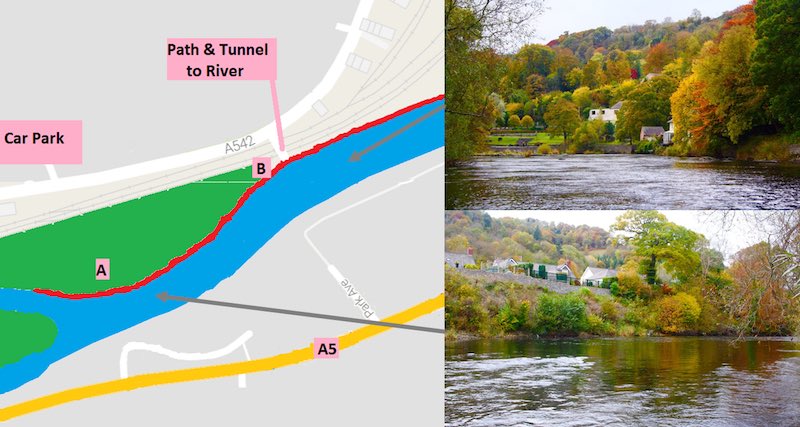
Fishing Jenny Jones in the morning to about 10 am and in the evening from 6 pm onwards are the best times. Primarily, to avoid the many canonists who use this section of the river during the day.
On the map above I have marked two good places to fish:
It’s best to fish Jenny Jones for trout and grayling when the river level is below 0.6m (Corwen gauge). Generally, I have the most success at summer levels of 0.5m or less.
My fly fishing approach to this section of the Welsh Dee is strongly dependent on the time of year, as highlighted below:
Largely my approach depends on water/air temperature.
On cold days Czech nymphs work well, particularly when there is little or no-fly activity on the surface.
When flies are observed coming off the water dry fishing can yield good results.
However, I find wet flies, spiders and nymphs fished close to the usually out fish dries.
My approach is governed by the time of day and cloud cover.
Early morning wet flies, spiders & nymphing techniques work well followed by dry flies.
On bright sunny days, by mid-day onwards focus on searching the bottom of well-oxygenated, shady runs with Czech nymphs.
In the evening dry flies and wet flies fished close to the surface usually pay dividends.
Trout and grayling can be caught using any of the three key fishing techniques: Czech nymphing, wet fly fishing and dry fly fishing. My prefered method depends on the following factors: time of the year, river and weather conditions.
Most anglers have their preferred fly patterns. However, for beginners or anglers new to the Welsh Dee the following are a selection of my work-horse flies.
A section of Czech nymphs that work well when the river is coloured are shown below (arranged left to right: point, middle dropper, top dropper):
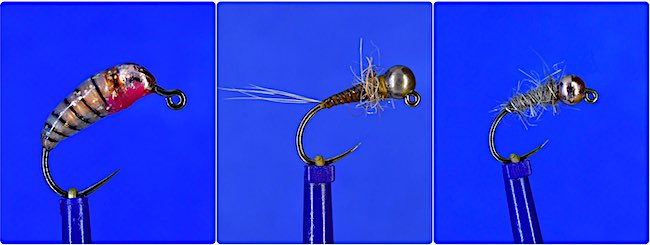
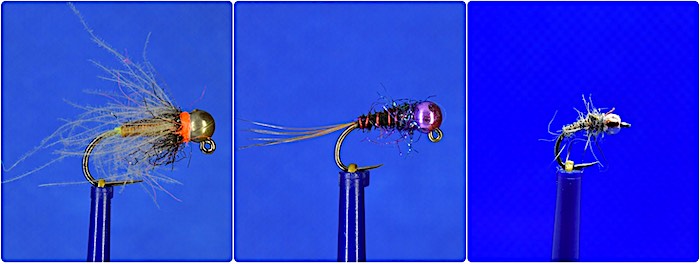
A section of wet flies and spiders for when the river is running are shown below (arranged left to right: point, middle dropper, top dropper):
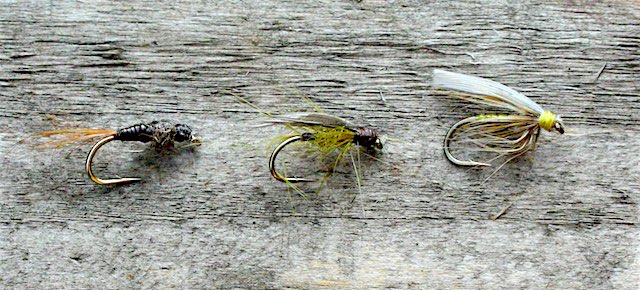

After accessing the river via the tunnel under the railway turn right and walk upstream through the wooded area until you reach the bottom part of Jenny Jones Island where two sections of the river join.
More often than not, I start fishing the fast riffle opposite the island with a team of wet flies; progressively, searching all the slacker pockets of water while working my way slowly downstream.
It is best to take your time in the fast water because it usually holds several fish. Particularly, in the crease where the flow from both sides of the island joins.
On fishing downstream, there are a couple of large submerged obstacles in the drop-off zone, where larger grayling typically lie.
If you don’t catch any good fish there with the wet fly, make sure you revisit that area with Czech nymphs after you have fished through the pool.
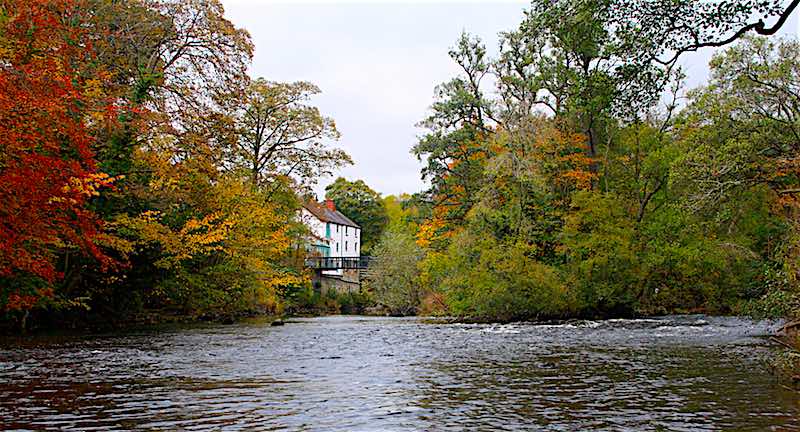
In the body of the pool, the trout and grayling tend to lie in the slacker water close to the far bank by the bushes. Most fish tend to be taken close to the far bank until you approach the tail, where it is worth making sure you search the full width of the river.
In the evening, large grayling often lie in the shallow water of the tail.

On warm evenings, the tail is a good place to target with the dry fly, because this is where you find fish actively taking flies from the surface.
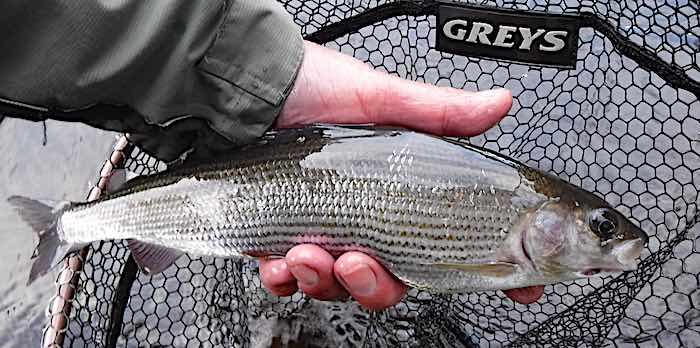
The pool by the entrance from the tunnel is a good piece of fly water. It has produced some good grayling and brown trout for me when fished at levels of 0.55m (Corwen gauge) or lower.
I find it is best to start fishing this pool from the riffle, just upstream of the tunnel.
As with most of the Welsh Dee, this pool is difficult to wade. So you need to be very careful because the bottom is slippy and very uneven.
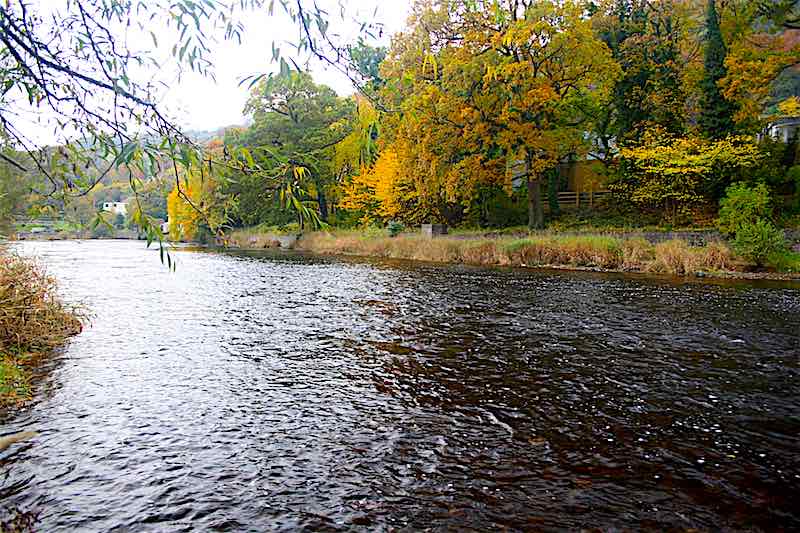
Usually, I’ve had most success fishing Jenny Jones in the morning with either wet flies or Czech nymphs.
When the water is clear, I will start by fishing a team of wet flies or spiders across and downstream. It is important to mend the line regularly to slow the movement of the flies because the main flow is close to this bank.
At the head of the pool, grayling are often found in the zone from mid-stream to the right bank, where the flow is slower.
On moving down the pool becomes deeper and most trout are normally taken in the foam line close to the far bank.
The tail is also a good place to find some lovely brown trout.
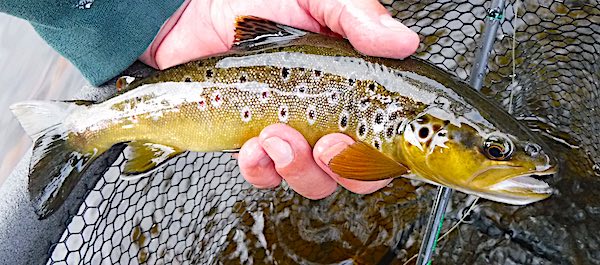
If wet flies fail to produce fish, I normally return to the riffle at the head of the pool and fish my way downriver again with a team of Czech nymphs.
This often works when there is little surface fly activity because the fish are focused on searching on the riverbed for food.
Dry fly fishing from the left bank is not easy because of riverbank trees and overgrown vegetation. These obstacles restrict casting to the fish lying on the far side of the main flow.
The latter making it a challenge to the drag-free presentation. However, on summer evenings, when fish are rising freely to hatching sedges, perseverance can yield good results.

Jenny Jones is not an area that I fish for sea trout after dark because there are just too many obstacles to contend with.
However, in the evening when the light is starting to fail I have catch sea trout to 1.5lbs on small wet flies (size 14 to 12) on a 3lb line.
The fishing technique that works for me, involves cast them into the shady sections of the river and then retrieve them with a quick figure-of-eight to stimulate a take. Flies that work well include: March Brown Spider, Black Pennell, brown sedge patterns, Black Cormorant etc.

Flies I have found successful tend to be traditional sea trout patterns in sizes 14 to 8. For example, Black Pennell, Teal Blue & Silver, Silver Stoats, Mallard & Claret, Peter Ross, Silver Stoats, and Alexandra.

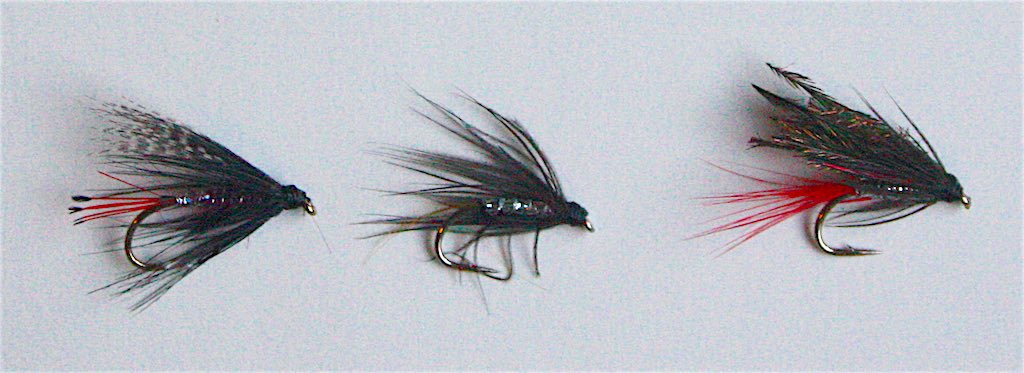
Both pools at Jenny Jones should hold salmon and I understand that salmon have been caught there.
However, to-date, I’ve never seen or caught any salmon in either of the pools. Therefore, I can’t offer any useful advice on what works. Maybe in the future, this will change.
If you are interested in learning more about the various flies that I find work on the Welsh Dee throughout the year then it’s worth reading the following post:
Jenny Jones is part of the Llangollen-Maelor town beat and day tickets for visiting anglers can be obtained by visiting the club website (Tariffs).
If further information is required, please click here to contact the club, who will be more than happy to help you.
From Llangollen take the A542 to the Eisreddfod pay & display car park. Then walk back down the road towards Llangollen. At the bend cross the road and walk down the path through Jenny Jones tunnel, which takes you down to the river.
Finally, I hope all the above information on fishing Jenny Jone helpful you improve your success.
Learning how to fly fish the Welsh Dee is a never-ending process. Therefore, if you have any advice or different experiences then it would be helpful if you would share them with me.
[Disclaimer – like most outdoor sports, fishing is not without its hazards. Therefore, you MUST do your own RISK ASSESSMENT before fishing Jenny Jones. Especially, if you decide to wade and/or fish at night. In addition, you must follow the club rules when fishing this water.]
Subscribe to my blog
Make your life easier - my blog posts delivered directly to your inbox.